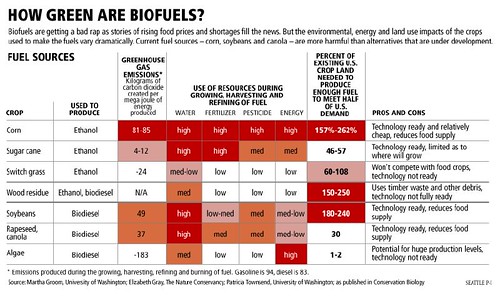Wednesday May 6, 2009 – ISSN 1529-1057
Register Now for IBTTA’s Upcoming Meeting – Incident Management, Safety and Security, July 19-21, 2009, Denver, CO
Join the International Bridge, Tunnel and Turnpike Association in Denver, CO to learn about best practices from around the world in Incident Management and Emergency Response. Sessions will explore the most effective tools and communication methods available to promote toll facility safety and security, maintain operations in the face of disruption, and effectively communicate with customers during all phases of an incident – from prevention to recovery. Other topics include crisis management during special events, Post Traumatic Distress Disorder and psychological impacts to employees, the role of engineering and maintenance in prevention and safety, and business continuity during disasters. Visit IBTTA’s website to view the preliminary agenda and register today!
AVIATION
1) Audit: US Air Traffic Systems Venerable to Attack
Link to story in The Washington Post:
http://www.washingtonpost.com/wp-dyn/content/article/2009/05/06/AR2009050601882.html
2) Pilots Group Takes to the Airwaves
Link to story on Politico:
http://www.politico.com/news/stories/0509/22138.html
3) A Look at Virgin Atlantic’s Cockpit Technology
Link to video on Gadling:
http://www.gadling.com/2009/05/06/gadling-gets-an-exclusive-look-at-virgin-americas-cockpit-tec/
4) Airlines Use Computers to Get ‘Personal’ with Customers
Link to story and video on KXAS-TV:
http://www.nbcdfw.com/news/local/AIrlines-Use-Computers-to-Get-Personal-With-Customers.html
CARTOGRAPHY
5) Does GPS Mean the End of the Road for Street Directories?
Link to story in The Daily Telegraph:
http://www.news.com.au/entertainment/story/0,28383,25440716-5007185,00.html
MARITIME
6) US Coast Guard to Harness Ocean Data to Improve Search and Rescue
Link to story in Government Computer News:
http://gcn.com/articles/2009/05/06/noaa-ocean-data-tool.aspx
OTHER
7) Latest Edition of Horizons Online
Link to magazine from US DOT’s Research and Innovative Technology Administration:
http://www.rita.dot.gov/publications/horizons/2009_05_01/pdf/entire.pdf
ROADWAYS
8) Boston Drivers Click to Fight Potholes
Link to story in Next American City:
http://americancity.org/daily/entry/1581/
Link to SeeClickFix: http://www.seeclickfix.com/
9) Driving LED Signage Efficiently
Link to story in ECN:
http://www.ecnmag.com/article-Driving-LED-Signage-Efficiently-050609.aspx?menuid=334
SAFETY / SECURITY
10) Report: FBI Slow to Update Terror Watch List
Link to AP story:
http://www.govexec.com/story_page.cfm?articleid=42669
11) Ensuring Work Zone Safety and Mobility
Link to interview with the Maryland State Highway Administration in the NTOC Newsletter:
http://www.ntoctalks.com/articles/workzonesafety.php
TRANSIT
12) Mobile Commerce Apps Gaining Ground in US
But near field communications slow to arrive, conference panelists say.
Link to story in Computerworld:
http://www.computerworld.com/action/article.do?command=viewArticleBasic&articleId=9132567&intsrc=news_ts_head
VEHICLES
13) Teens and Driving: Ford Gadget Seeks to Curb Teen Speeding, but 80 MPH Limit Draws Criticism
Link to story in the Chicago Tribune:
http://www.chicagotribune.com/news/nationworld/chi-talk-my-keymay06,0,881053.story
14) Car Talk
Could cars talk to each other directly to make the streets safer?
Link to story in Popular Science:
http://www.popsci.com/cars/article/2009-04/car-talk
News Releases
1) FAA Commends ARINC’s Performance in Support of Oceanic Flight Communications
2) Operation Lifesaver ‘Shark’ Safety PSAs Will be Featured in Amtrak Stations May 9
3) EASi and NeST Announce Strategic Partnership
4) Icomera Introduces Rugged Wi-Fi Cellular Router for Rail and Road Vehicles
Upcoming Events
APTA Intermodal Operations Planning Workshop – August 3-5 – Salt Lake City, Utah
http://www.apta.com/conferences_calendar/intermod/
Today in Transportation History
1909 **100th anniversary** – Loyd Sigmon, the originator of the ‘Sig Alert’ system used for major traffic problems in the Los Angeles area, was born.
http://harrymarnell.net/sigalert.htm
=============================================================================================
The Transportation Communications Newsletter is published electronically Monday through Friday.
To subscribe send an e-mail to: TCNL-subscribe@googlegroups.com
To unsubscribe send an e-mail to: TCNL-unsubscribe@googlegroups.com
TCN archives: http://groups.yahoo.com/group/transport-communications
Questions, comments about the TCN? Please write the editor, Bernie Wagenblast at i95berniew@aol.com.
© 2009 Bernie Wagenblast
 After weeks of speculation, Fiat confirmed today that its CEO, Sergio Marchionne, will assume the same role with Chrysler once it exits bankruptcy. According to statements from the Obama administration, Chrysler could emerge from “surgical bankruptcy” in as little as 30 to 60 days, after which Chrysler’s current chief executive Bob Nardelli will step down and Marchionne will step in.
After weeks of speculation, Fiat confirmed today that its CEO, Sergio Marchionne, will assume the same role with Chrysler once it exits bankruptcy. According to statements from the Obama administration, Chrysler could emerge from “surgical bankruptcy” in as little as 30 to 60 days, after which Chrysler’s current chief executive Bob Nardelli will step down and Marchionne will step in.








